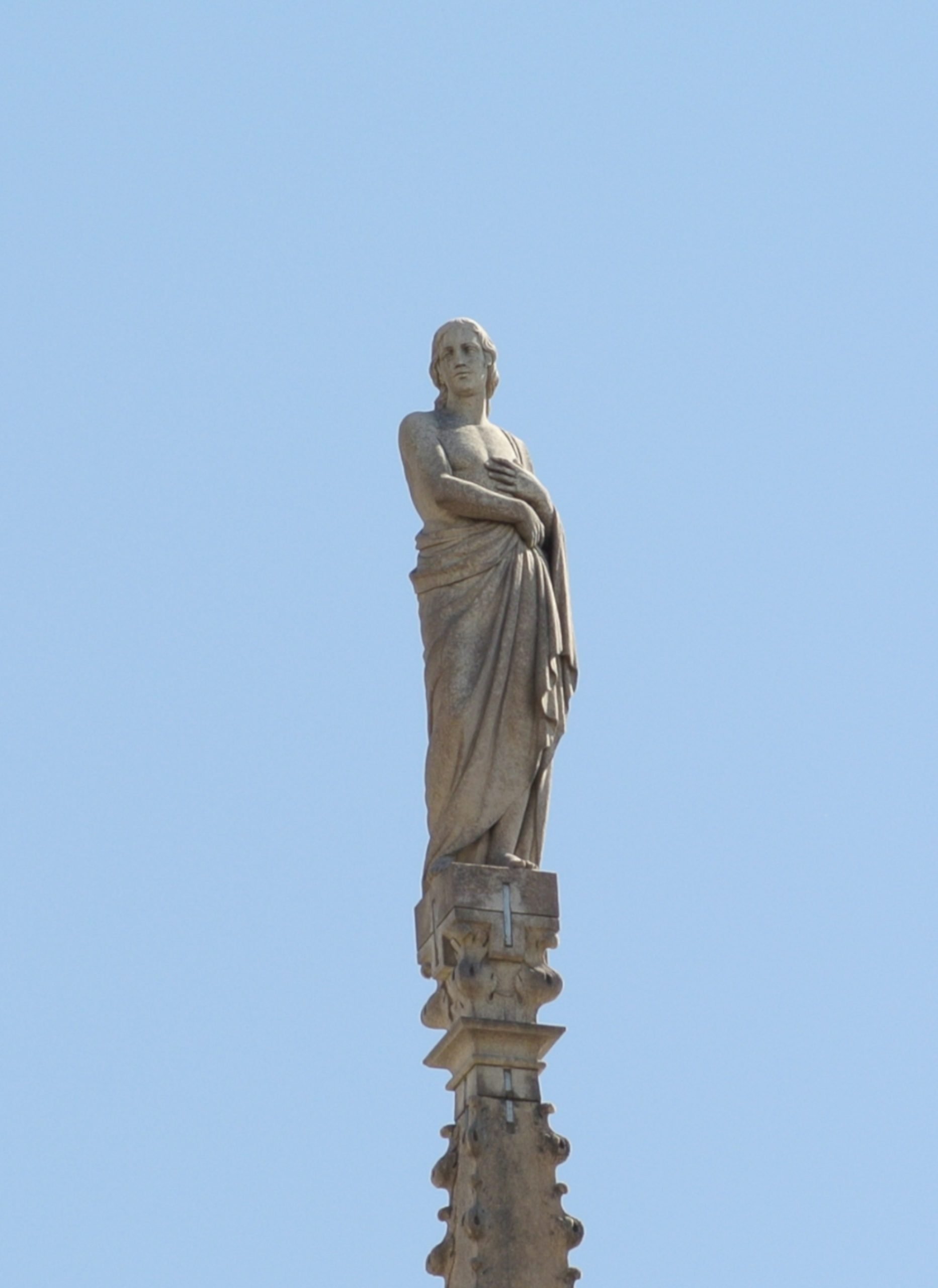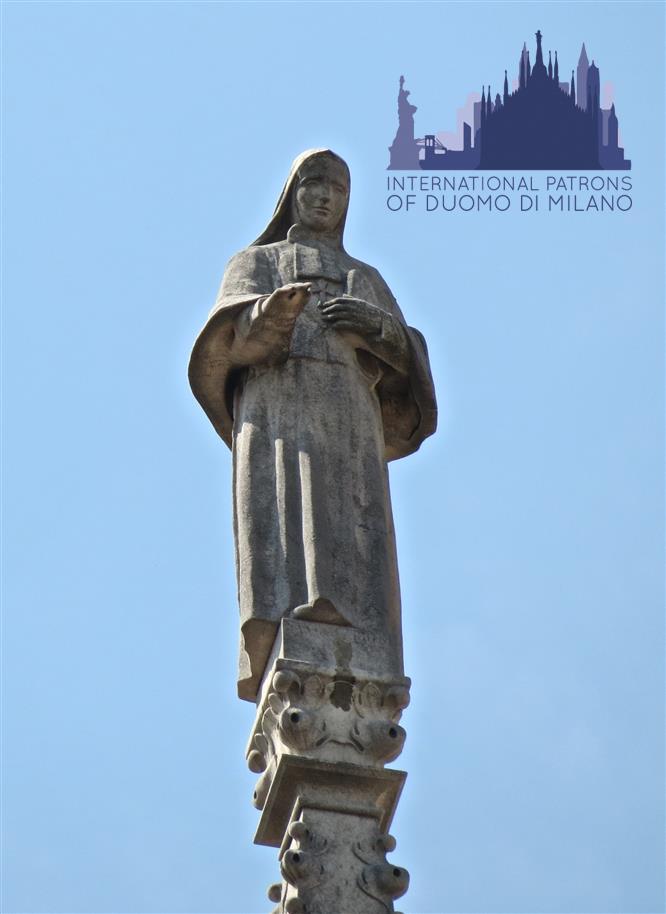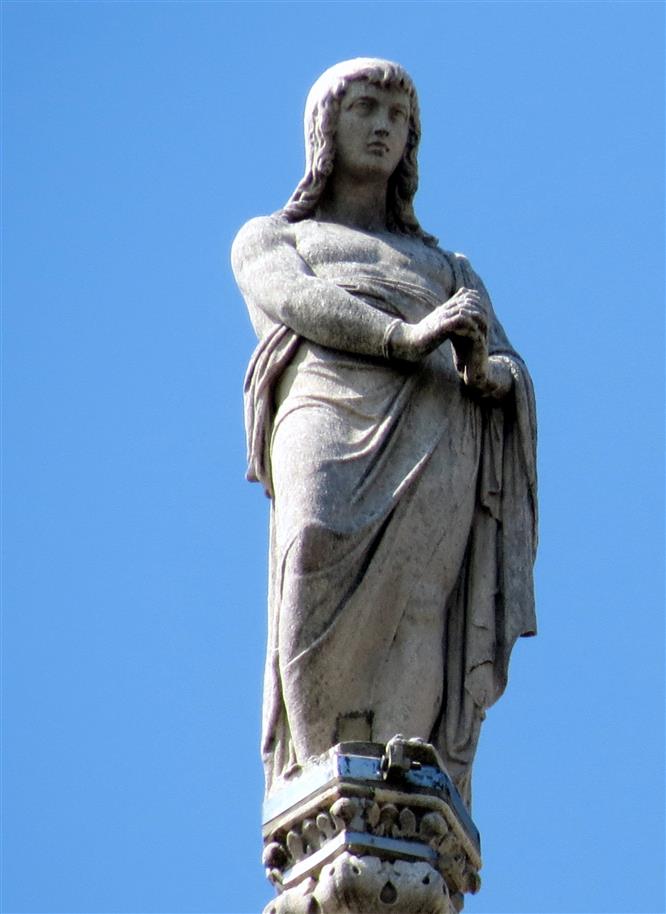Ignatius was one of the pillars of the ancient church, just as Antioch was one of the most important cities, being the third metropolis after Rome and Alexandria in Egypt. He was not born a Christian, but he converted at an advanced age, and despite this, he was a very devout man of great zeal. While he was bishop in Antioch, Emperor Trajan began his persecution: Ignatius was condemned and led in chains from Antioch to Rome, where the sacred martyrs were used as a spectacle, devoured by wild beasts in the circus. During his journey Ignatius wrote a series of letters, which later became very important, in which he addressed his faithful, recommending them not to fall into sin and above all not to interfere with his martyrdom, trying to save him. He then died in the year 107.
Tales of the statue in Dome’s building site:
The original statue of Sant’Ignazio, whose execution is attested in the archive documents in 1811, is the work of the sculptor Pietro Ferroni and is today preserved at the Marble Builders Yard. In 2010 it was replaced by a reproduction sculpted by Nicola Gagliardi, which however retains its characteristics and the same pose: the Saint is depicted in all his classic beauty in an upright position with his right leg slightly bent. The body, as per the typical iconography of martyrs, is almost completely uncovered, if it were not for a cloth that is held up by the left hand. The right arm is bent as if the subject was holding an invisible tool, perhaps lost or never made.
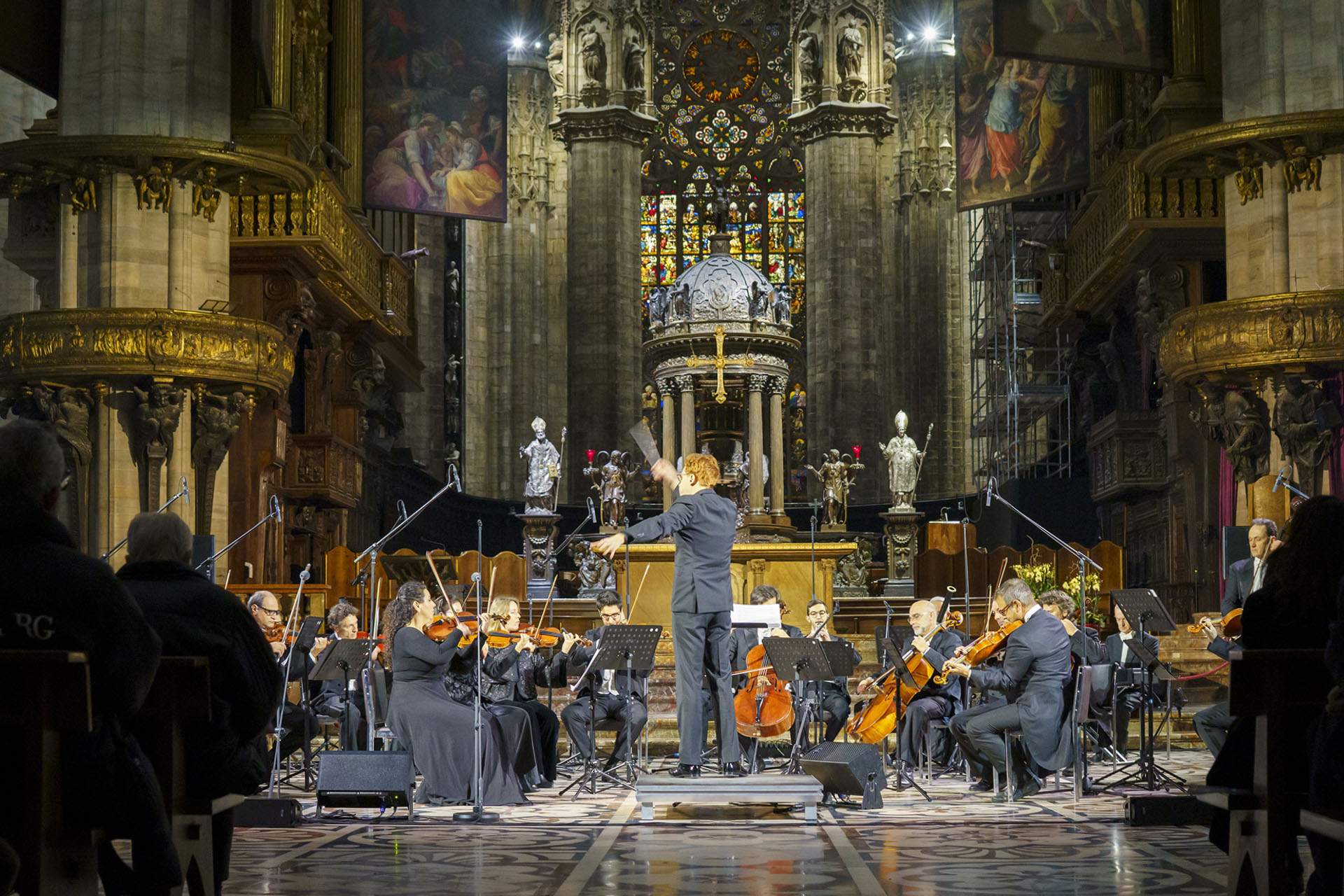
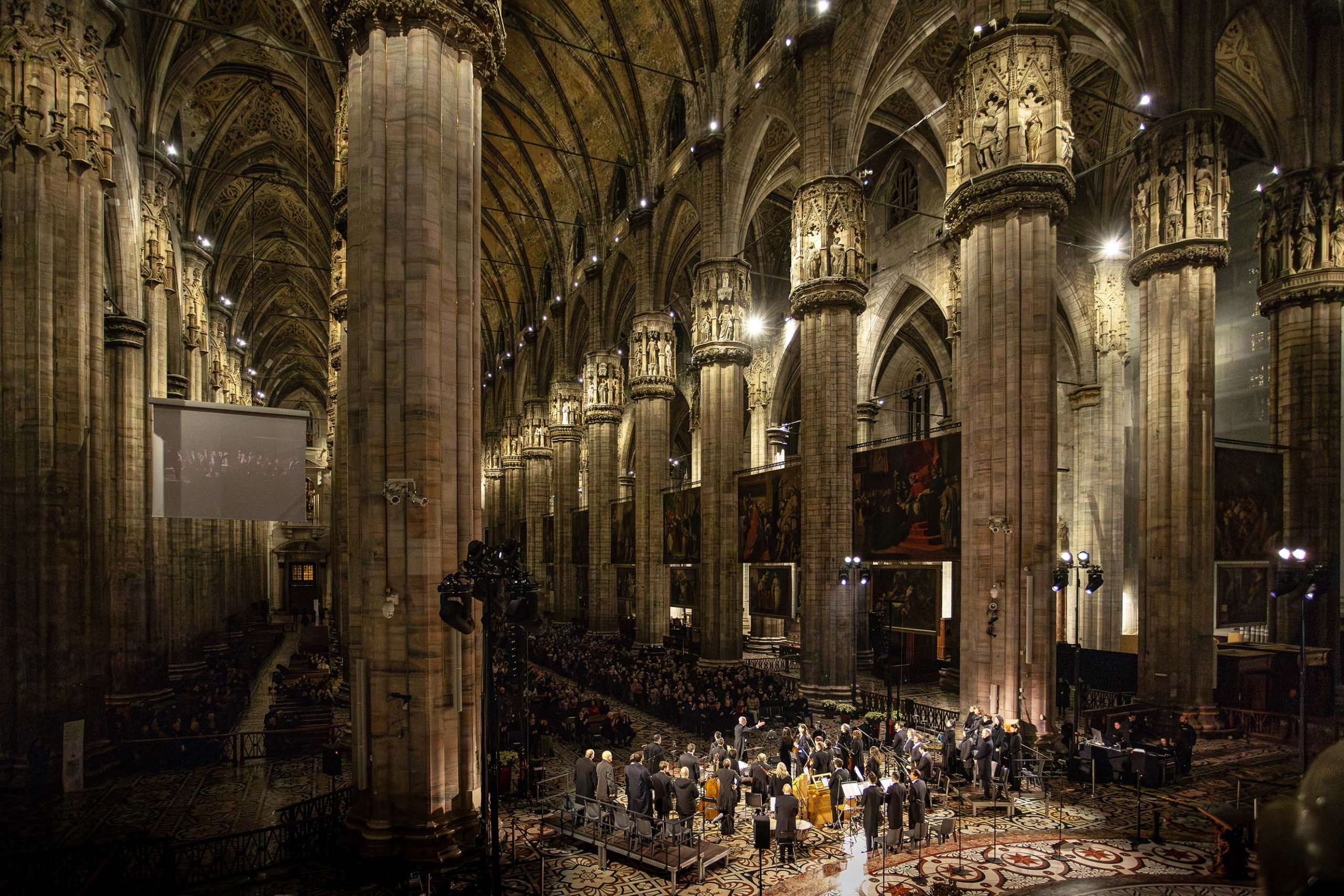
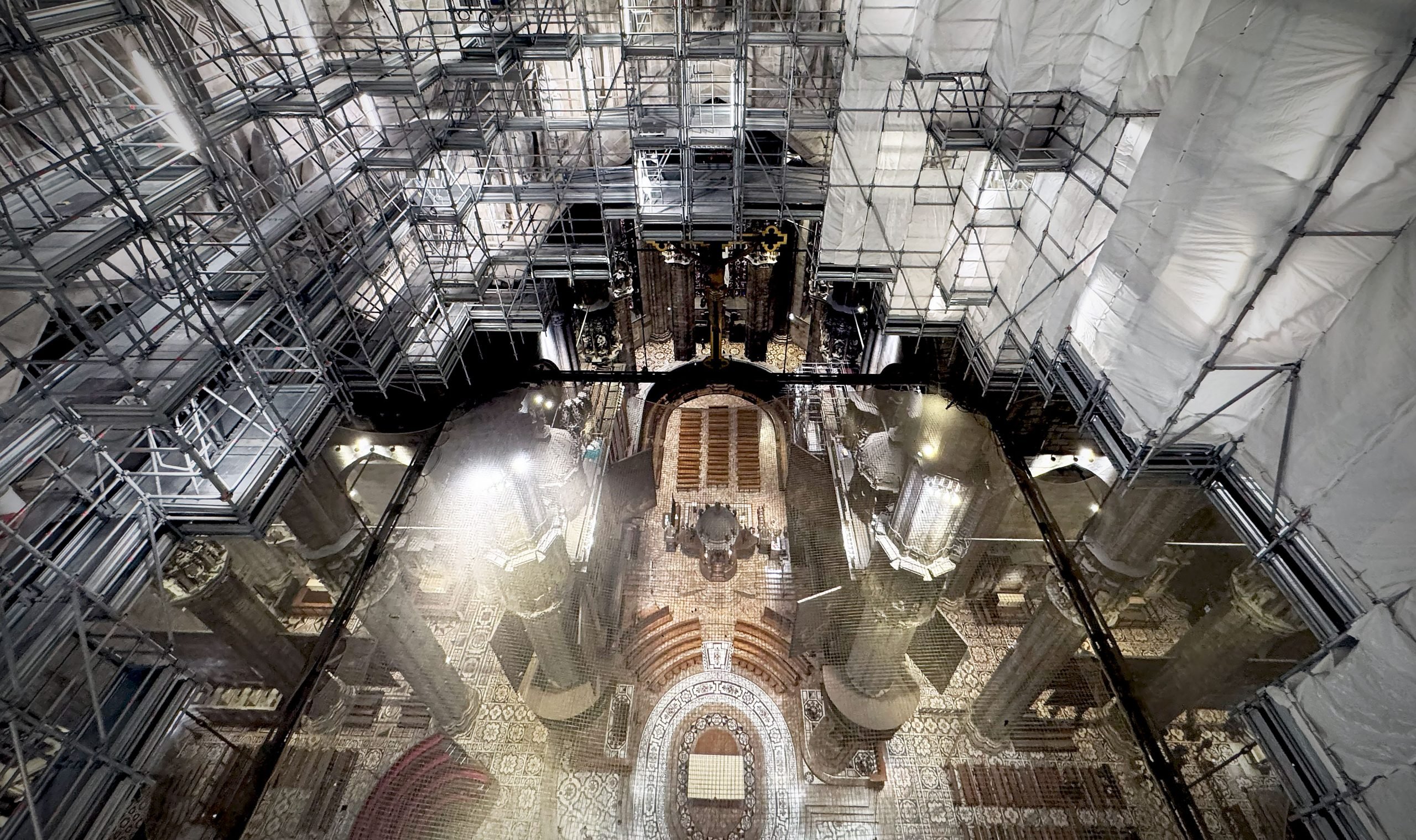
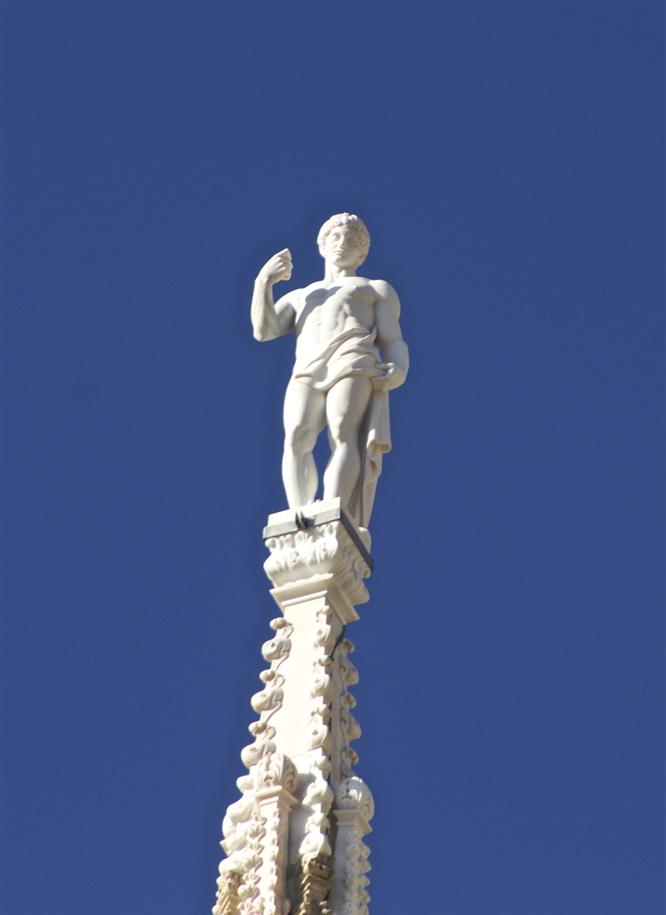

 Tiburio
Tiburio